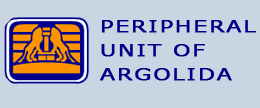Mycenaean Cemetery of Dendra
 |
||
|
Along the Mycenaean cemetery of Dendra extends to the south-western slope of a low hill, west of the Mycenaean Acropolis of Midea. The excavated part includes a vaulted and sixteen chambered tombs.
|
||
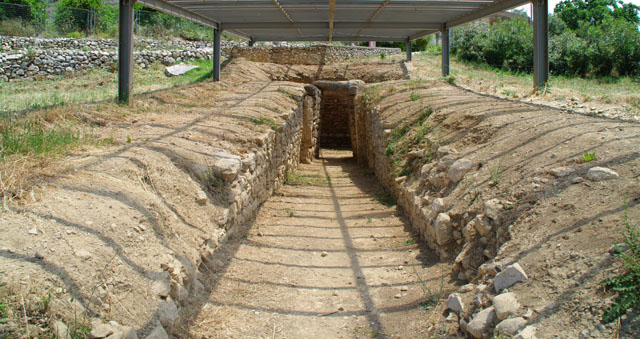 |
||
| The Vaulted Tomb | ||
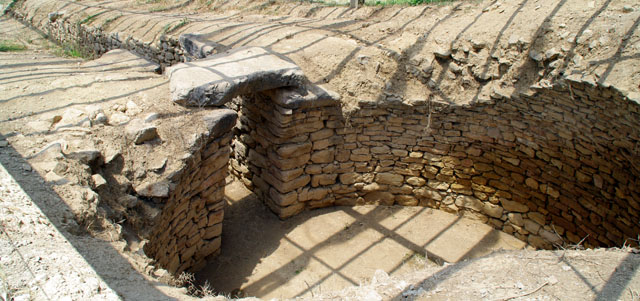 |
||
| The Vaulted Tomb | ||
|
In 1960, the famous "Tomb of Armor", was investigated by N. Verdelis and two other chambered tombs were investigated by the Swedish archaeologist P. Åström. In 1977, two cambered tombs and mounds that surround them were excavated by E. Protonotariou - Deilaki The chambered tombs were carved into the soft rock with a thick hillside. They consist of three parts: the street, the orifice and the chamber. |
||
|
The tombs differ both in terms of size (the smaller is 8 and the largest almost 20 meters), and in the way that the burial chamber is configured. They have downhill routes with converging walls and quadrilateral burial chambers. The entrance is obstructed in dry stone. Plastered walls and floors, pitched or flat roof, benches and alcoves and side chambers give the impression that these tombs imitate the houses of the living.
On the floor of the chambers, additional pits often were dug. The graves had been used for burials, for long periods. Important information for funerary rituals of Mycenaean Period is given to us by the tombs of three pairs of horses found in the vicinity of their graves. |
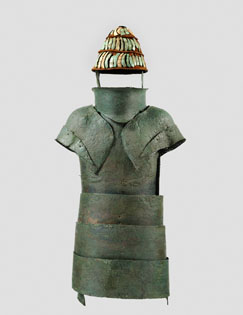 |
|
| Armor of Dendra |
||
|
|
||
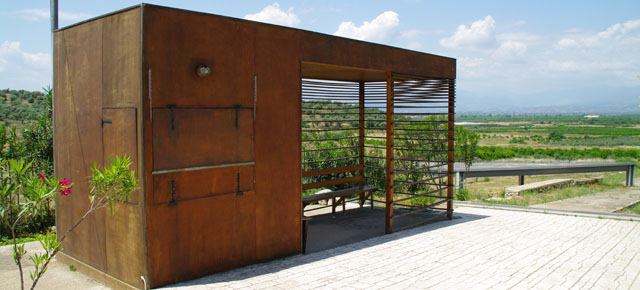 |
||
| The entrance of the archaeological site | ||
|
The findings from the Mycenaean cemetery of Dendra are kept in the Archaeological Museum of Nafplio and at the National Archaeological Museum. At the archaeological site, many educational programs take place by D EPCA for students of all ages. For information about educational programs please contact with D EPCA |
||
|
Evangelia Pappi
Archaeologist, Ministry of Culture, D EPCA |
||
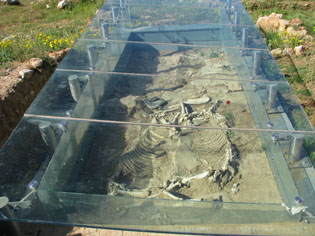 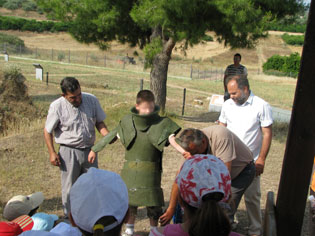 |
||
| Frame Horse Scene from training program | ||
|
Opening hours of Archaeological Site Monday - Friday 8:30 - 15.00 |
||
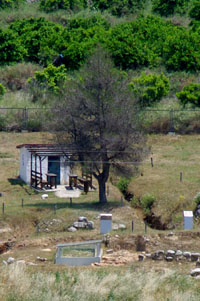 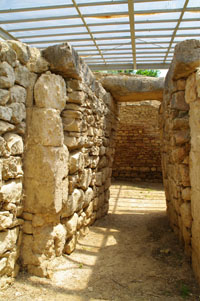  |
||



